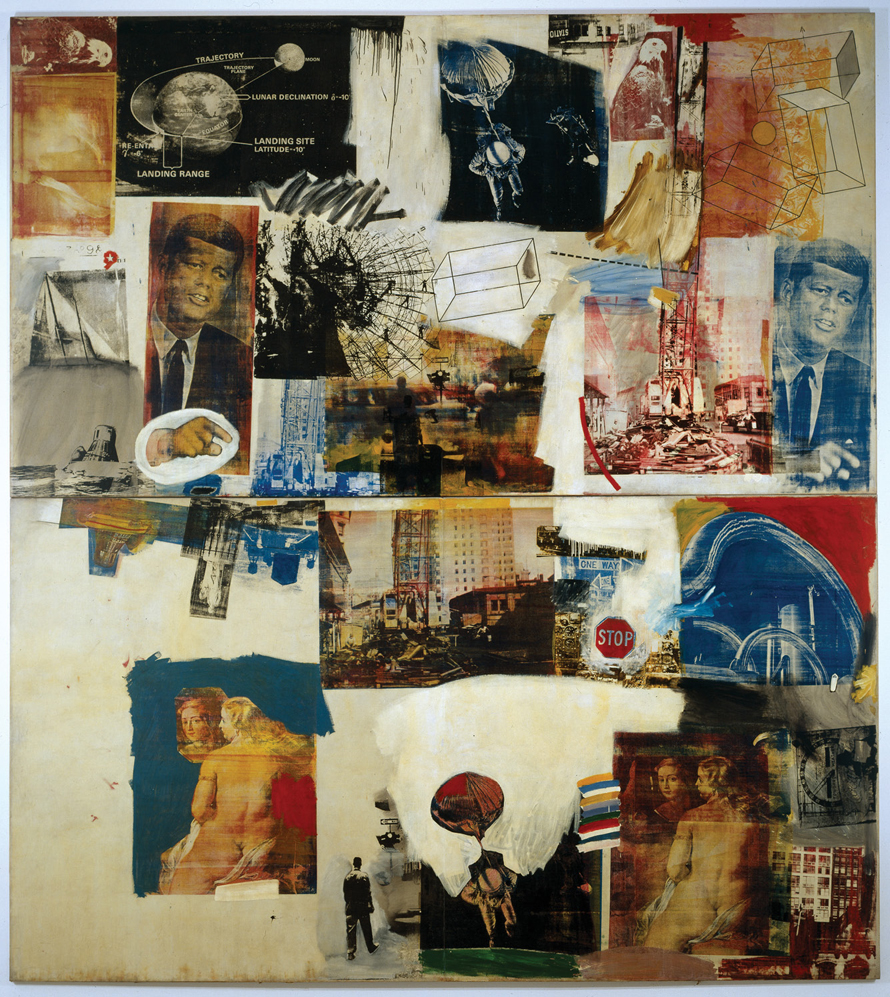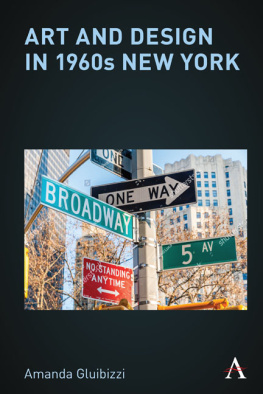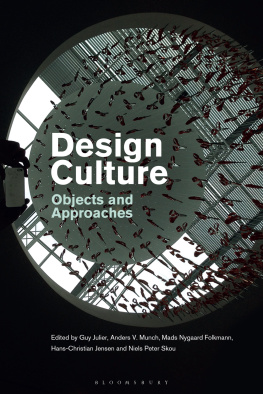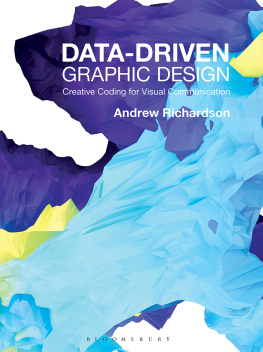Art and Design in 1960s New York

Art and Design in 1960s New York
Amanda Gluibizzi

Anthem Press
An imprint of Wimbledon Publishing Company
www.anthempress.com
This edition first published in UK and USA 2021
by ANTHEM PRESS
7576 Blackfriars Road, London SE1 8HA, UK
or PO Box 9779, London SW19 7ZG, UK
and
244 Madison Ave #116, New York, NY 10016, USA
Copyright Amanda Gluibizzi 2021
The author asserts the moral right to be identified as the author of this work.
All rights reserved. Without limiting the rights under copyright reserved above, no part of this publication may be reproduced, stored or introduced into a retrieval system, or transmitted, in any form or by any means (electronic, mechanical, photocopying, recording or otherwise), without the prior written permission of both the copyright owner and the above publisher of this book.
British Library Cataloguing-in-Publication Data
A catalogue record for this book is available from the British Library.
ISBN-13: 978-1-78527-665-1 (Hbk)
ISBN-10: 1-78527-665-4 (Hbk)
Cover Image: Venturelli Luca / Shutterstock.com
This title is also available as an e-book.
CONTENTS
Art and Design in 1960s New York was written several years ago, but I prepared the manuscript for publication during New York Citys shelter-in-place orders due to the COVID-19 pandemic of 2020. Each night at 7:00, our block has erupted in cheers, applause, the ringing of bells and blowing of horns and Frank Sinatra singing New York, New York as our neighbors celebrate the first responders, emergency workers, nurses, doctors, hospital technicians, public transportation employees, package deliverers and grocery store and bodega clerks who have kept us healthy and safe and our city running. It has been sobering for me to think about the fear I feel in New York now and the frustrating city described here: they are so different, but they also cause us to think about community and our evolving definitions of what that means. I thank our health-care, emergency and essential workers for what they have given to the rest of us.
This book began as a dissertation written for the Department of History of Art at Ohio State University. My thesis adviser, Aron Vinegar, and my committee members, Lisa Florman, Ron Green and Kris Paulsen, offered invaluable help to me as I worked through my ideas and were open minded as I explored the mutual interests of art and design; I am also grateful to the faculty members who indulged me as I developed these concepts throughout my coursework. Aron proved to be an especially important interlocutor for me, and I am honored to express my thanks to him here. My time researching and writing benefited from an Ohio State University employee tuition waiver and special research assignments, and the Ohio State University Libraries and my coworkers in that college particularly Nena Couch, Anne Fields, Alan Green, Deidra Herring, Dracine Hodges and Eric Johnson proved supportive and interested. After I moved to teach in the Departments of Art and History of Art at the university, I was grateful to find a warm welcome with another encouraging group of artists and scholars, and the friends and colleagues with whom I discussed this project include Roger Beebe, Ann Hamilton, Erica Levin, Laura Lisbon, Daniel Marcus, Michael Mercil, Gina Osterloh, Dani Restack, George Rush, Andrew Shelton, Sergio Soave, Suzanne Silver and Jared Thorne.
Outside of Ohio State, I first started thinking and teaching about art and design at the Art Institute of Boston (AIB; now the College of Art and Design at Lesley University), and I would like to acknowledge Susan Ashbrook, Chris Ford, Christopher James and Raye Yankauskas, as well as my students at AIB, who were the initial inspirations for my investigations. Phong Bui, Charles Schultz, Nick Bennett, Louis Block, Sophia Pedlow and my fellow editors and writers at The Brooklyn Rail are wonderful cheerleaders and have reminded me again and again about the importance of community. I have presented aspects of the work at Ohio State, Parsons School of Design/The New School, the Wentworth Institute of Technology and the University of Massachusetts Amherst and published a portion of Chapter 3 in Meta- and Inter-Images in Contemporary Visual Art and Culture, edited by Carla Taban and released by the University of Leuven Press. I thank the audiences and readers for their helpful questions and suggestions. My research would not have been complete without access to the archives and library at the Museum of Modern Art and the Vignelli Archive at the Rochester Institute of Technology; I am grateful to the archivists and librarians for their aid. Pursuing image rights for artworks, motion pictures and advertisements is a skill in and of itself, let alone during a crisis that has closed the worlds cultural institutions, and I would have been lost without Gina Broze helping me to do so. Megan Greiving and the editors and production team at Anthem Press have proven extremely supportive, and I also thank Richard Pult and the anonymous readers of the manuscript for offering me such useful suggestions. Any mistakes or omissions are mine.
This has been a long process, and I have accumulated many debts to friends who have worked with me to puzzle things out or given me encouragement. Among those I must mention by name are Danielle Callegari, Derrick Cartwright, John Christopoulos, Holly Flora, Byron Hamann, James Hansen, Michael Lobel, Jonathan Mullins, Alexander Nagel, Emily Neumeier, Aimee Ng, Joe Paganucci, Diego Pirillo, Olivia Powell, Courtney Quaintance, Kirun Sankaran, Amelia Saul and Jenny Sliwka. My family have helped me more than they can know. Sincere thanks to my siblings and their partners and children for understanding my single-mindedness while I was writing and for being willing to hear what was being done, and to my grandparents for being curiosity role models. What I know about hard work, civic responsibility and caring for others I learned from the best teachers, my parents Lynne and Steve Halasz.
When I write that none of this would have been possible without the interest and support of Christian Kleinbub, I am not exaggerating. He has read every chapter almost as many times as I have, and many of the ideas I like the best come from my conversations with him. Christian constantly pushes me to be better, and for that, I cannot thank him enough. He is a true lover of New York, and I so value the explorations we have undertaken in this and many other cities. Together with our daughter Angelina Lynne, I will be excited to continue those journeys. This book is for him.
When Robert Rauschenberg reminisced about Josef Albers teaching students that their art had to do with the entire visual world, he was suggesting an inclusive realm of visual expression from which Albers intended his students to draw. And indeed, printed images were all around them: in a 1966 discussion of pop artists titled The Image Duplicators, Ellen H. Johnson noted,
Caught in traffic jams, packed in buses, subways, elevators, or spending a quiet evening at home, never has the human being been such a captive of the printed image, constantly changing and endlessly repeated: in books, newspapers and magazines, on the shifting world of the TV or movie screen, the blaring billboards, highway signs, giant lighted ads for hotels, theaters, storeseverywhere pictured products and pictured people beckoning, commanding and assaulting. These are the fields of Suffolk and the Fontainebleau Forest of our painters.








